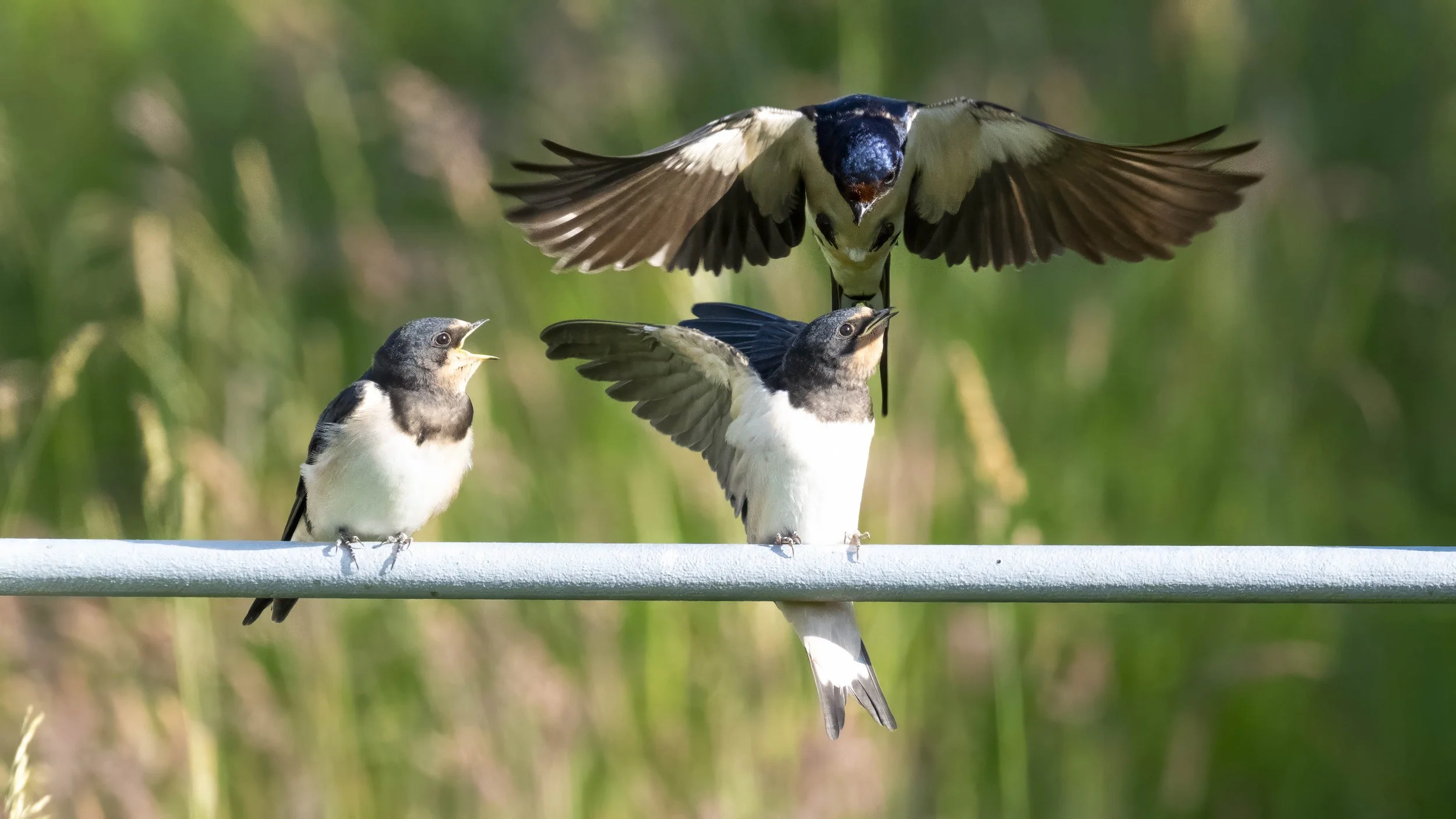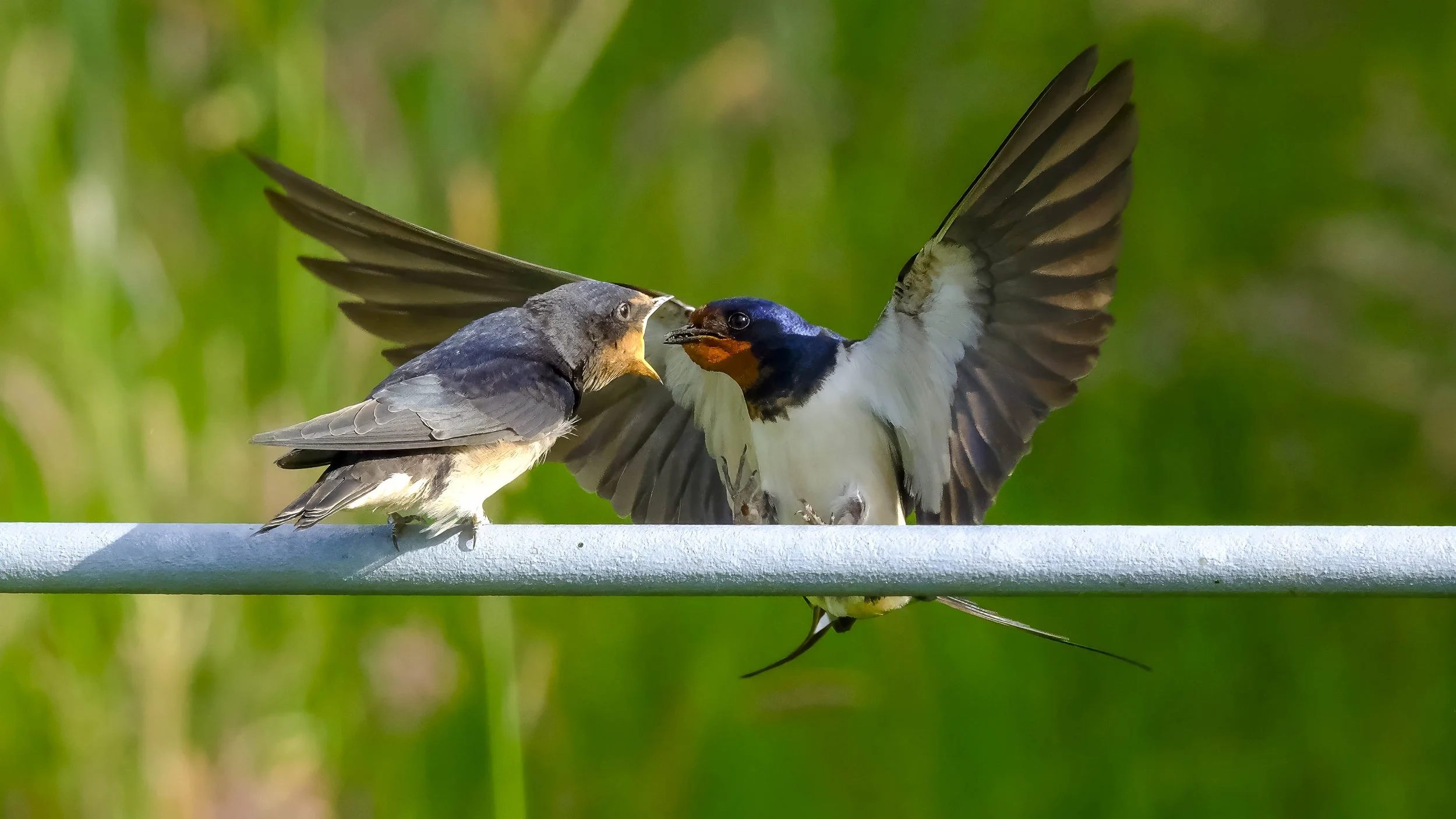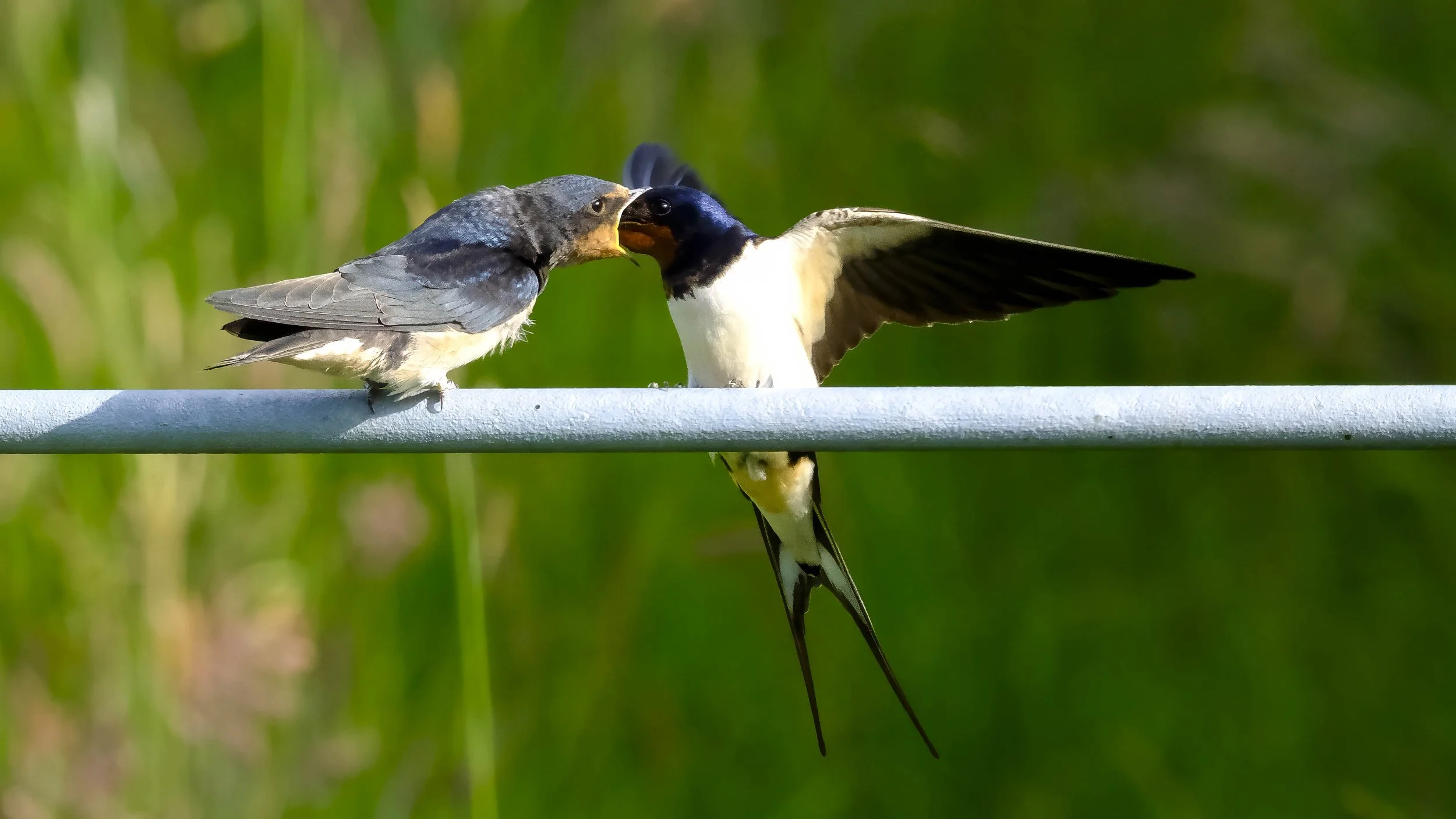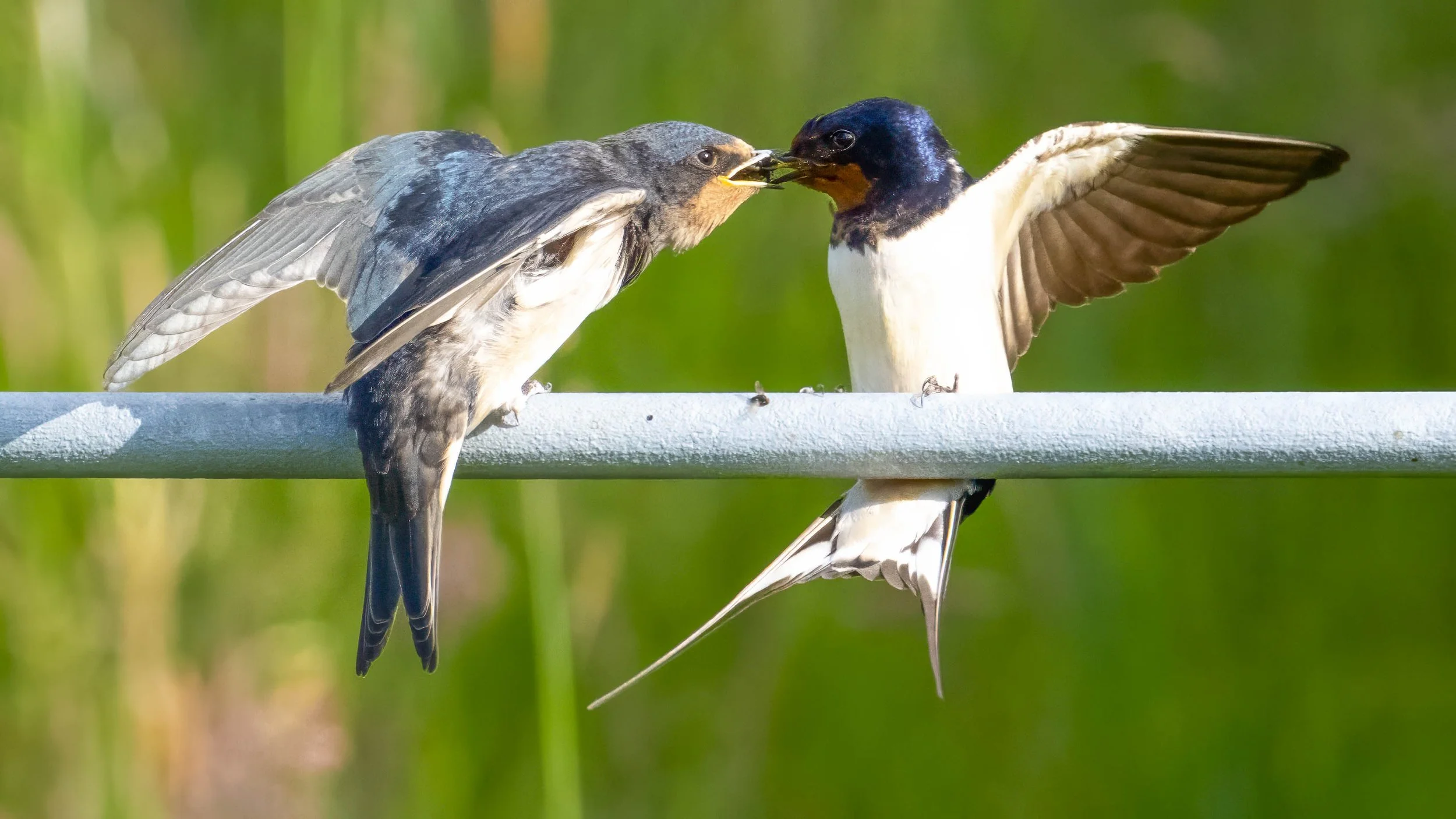Swallows in the Angus Glens
Swallow Fledglings on the Gate
Field Notes from the Angus Glens
Date: Late August | Weather: Warm, clear skies | Location: Five-bar gate near upland pasture
Species Spotlight: Barn Swallow (Hirundo rustica)
The Angus Glens in late summer hum with quiet movement. On this golden afternoon, a weathered five-bar gate became a perch for six recently fledged Barn Swallow chicks—lined up like musical notes against the landscape.
These juveniles lacked the long tail streamers of their parents, but their pale undersides, dark chest bands, and glossy blue-black backs marked them unmistakably. No white rump here—that’s the House Martin’s signature. Instead, the red throat and slender silhouette confirmed their identity.
Field Observations
• Juvenile ID: Short tails, creamy undersides, still reliant on adults
• Adult ID: Long forked tails with streamers, red throat, agile flight
• Feeding Behavior: Adults delivered flies caught mid-air with precision
• Social Structure: More than two adults fed the group—suggesting communal care or overlapping broods
For 90 minutes, I watched from the car—positioned as a mobile hide—as adults swept in and out, feeding the hungry fledglings with aerial grace. The choreography was relentless, elegant, and oddly tender.
📸 Photography Notes
Capturing swallows in flight demands speed and patience. For this session:
• ISO: Raised to allow faster shutter speeds
• Shutter Speed: Between 1/2550–1/4000 sec to freeze motion
• Format: Shot in JPEG to enable burst shooting
• Setup: Car used as a hide for unobtrusive observation
The gate offered a perfect compositional anchor, and the soft glen light gave the plumage a subtle shimmer—especially on the adults’ backs.
Quick ID: Swallow vs Swift vs Martins
Swallows, swifts, and martins are often seen darting through summer skies—but each has distinct features, flight styles, and nesting habits. This guide offers a quick-reference comparison to help you identify them in the field.
Swallow (Hirundo rustica)
• Glossy blue-black head and back,Pale underside with a dark chest band,Distinctive red throat,Long, deeply forked tail with thin streamers (adults only),Graceful, swooping flight with agile turns,Builds open cup nests in barns, ledges, and sheltered spots, Soft, musical twittering call,Often seen perched on wires, gates, or fences,Summer migrant in the UK (April–October)
Swift (Apus apus)
• Uniform dark brown-black plumage with pale throat,Long, crescent-shaped wings and short, slightly forked tail,Never seen perched—almost always in flight,Screaming, high-pitched call often heard in groups,Fast, scything flight with high-speed glides,Nests in crevices, under eaves, or in old buildings—no visible nest,Larger and more robust than swallows or martins,Summer migrant in the UK (May–August)
House Martin (Delichon urbicum)
• Blue-black back with a bright white rump,White underside and throat,Short, forked tail—no streamers,Fluttery, less acrobatic flight than swallows,Builds mud nests under house eaves and ledges,Chirpy, less melodic call,Often seen in colonies around buildings, Summer migrant in the UK (April–October)
Field Tips
• Swallow: Look for the red throat, long tail streamers, and musical calls. Often seen perched on wires or gates.
• Swift: Almost never seen perched. Their crescent wings, screaming calls, and high-speed flight are unmistakable.
• Martin: That white rump is the giveaway. Often nests in colonies under house eaves.
Reflections
There’s something quietly iconic about swallows on a gate—symbols of summer, movement, and return. In the hush of the glens, their presence felt like a fleeting gift. The layered blue-black of their backs shimmered in the light, echoing the hills beyond.




